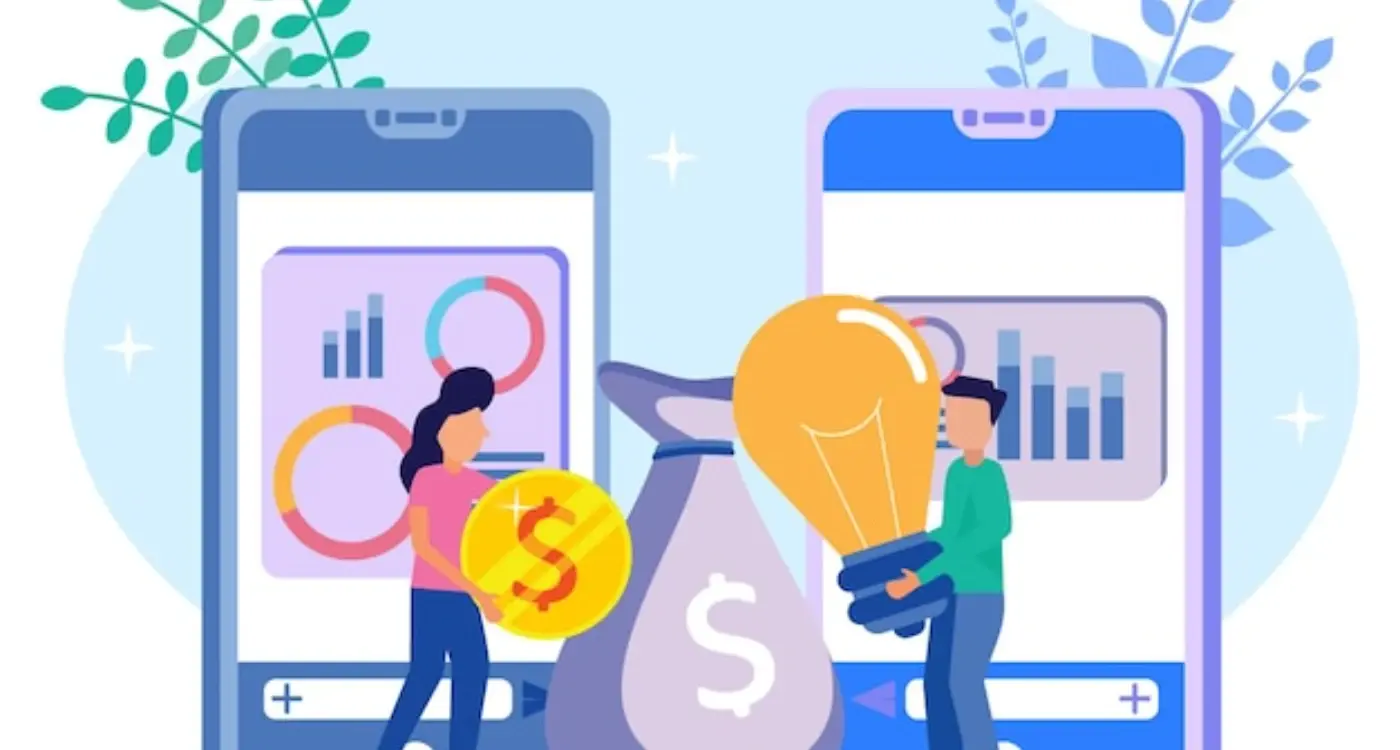How Do I Compete With Bigger Companies' Apps?
Every day, thousands of small businesses watch their potential customers download apps from massive companies with unlimited budgets and teams of hundreds. It feels impossible, doesn't it? How can your small business app compete with giants who spend more on coffee than you do on your entire marketing budget? Here's what I've learned after helping dozens of smaller companies build successful apps that actually win users from much larger competitors—size isn't everything, and the biggest players often have the biggest blind spots.
The mobile app world might seem dominated by tech giants, but there's a secret that most people don't realise. Large companies move slowly, make decisions by committee, and often lose touch with what real users actually want. They build features because they can, not because they should. Meanwhile, small business app strategy can focus on doing one thing brilliantly rather than trying to be everything to everyone.
The best way to compete with large apps isn't to copy what they do—it's to do what they can't do
This guide will show you exactly how to find your app competitive advantage and turn your size into a strength. We'll explore how to move faster than big companies, build genuine connections they can't match, and use smart technical choices that make your app feel premium without the premium price tag. Think of this as your David vs Goliath apps playbook—because sometimes the smallest stone hits exactly where it needs to.
Understanding Your Unique Position
When you're staring at the app store rankings and seeing giants like Facebook, Google, or Amazon dominating every category, it's easy to feel defeated before you've even started. I get it—I've had countless conversations with startup founders who think they need millions in funding just to get noticed. But here's what eight years in this business has taught me: being small isn't your weakness, it's your superpower.
Big companies have massive resources, but they also have massive problems. They've got board meetings, shareholders breathing down their necks, and legacy systems that take months to change. When WhatsApp wanted to add a simple feature, it probably went through seventeen committees and a focus group. You can build, test, and launch that same feature over a weekend.
What Makes You Different
Your unique position comes from three key advantages that big companies simply can't replicate:
- You can make decisions instantly without corporate bureaucracy
- You can speak directly to your users—no PR department filtering messages
- You can pivot your entire strategy based on user feedback within days
- You actually use your own product daily and understand real pain points
Stop trying to beat them at their own game. Instead, play a completely different game—one where being nimble, personal, and genuinely passionate about solving problems matters more than having the biggest marketing budget.
Finding Your Niche and Target Audience
Here's the thing about competing with massive apps—you don't need to appeal to everyone. In fact, trying to please millions of users is exactly what will kill your chances before you even start. The big players have to cater to such broad audiences that they often miss the specific needs of smaller groups. That's where you come in.
I've watched countless small apps succeed by focusing on one particular group of people who felt ignored by the mainstream options. Take fitness apps, for example. Instead of trying to compete with the giants that offer everything to everyone, successful smaller apps might focus solely on yoga beginners, runners over 50, or people recovering from injuries. These focused approaches work because they solve specific problems that general apps can't address properly.
How to Identify Your Perfect Niche
Start by looking at the reviews of popular apps in your category. What are people complaining about? What features do they wish existed? These complaints are gold—they're showing you exactly where the big apps are failing their users.
- Read negative reviews on major competitor apps
- Join online communities related to your app's purpose
- Survey people who currently use similar apps
- Look for underserved demographics or use cases
Don't try to be everything to everyone. Pick one specific group of people and become their favourite solution.
Once you've identified your niche, everything else becomes clearer. Your marketing messages, your feature priorities, even your app's design should speak directly to these people. When someone in your target audience sees your app, they should think "finally, someone gets it"—that's when you know you've found your sweet spot.
Speed and Agility as Your Secret Weapon
Here's something big companies struggle with—making quick decisions. I've watched Fortune 500 companies take months to approve a simple button colour change whilst smaller teams ship entire features in the same timeframe. That's your advantage right there.
When you're small, you can pivot faster than a startup founder chasing venture capital. Users report a bug? You can fix it within days, not quarters. New trend emerges? You're already building it whilst your competitors are still scheduling meetings about scheduling meetings. This speed isn't just nice to have; it's genuinely powerful in today's mobile app market.
Moving at Lightning Speed
Big companies have processes for everything—approval chains, compliance checks, legal reviews. You don't need half of that bureaucracy. When Instagram was starting out, they could push updates weekly; Facebook (who later bought them) was updating their main app monthly at best. Speed wins users.
Staying Close to Your Users
Large companies rely on focus groups and market research that takes weeks to compile. You can literally chat with your users directly through support channels, social media, or app reviews. That direct feedback loop means you're building what people actually want, not what a research report suggests they might want six months from now.
Building Personal Connections With Users
Here's something big companies struggle with—they can't have a real conversation with their users. When someone emails Apple or Google, they get a template response from a support team member they'll never speak to again. But when someone contacts your small business app, they might get a personal message from you, the founder.
This personal touch is your secret weapon when you compete with large apps. Users today crave authentic connections. They want to feel heard and valued, not like they're just another number in a database. Your small business app strategy should put this human element front and centre.
Make Every User Feel Special
I've seen small app developers turn angry users into their biggest fans simply by responding personally to complaints. One client of mine sends handwritten thank-you notes to their first 100 users—sounds old-fashioned, right? But those users became incredible advocates for the app.
The best customer service is when the customer doesn't need to use it, but when they do, they feel like they're talking to a friend
Be Real, Be Human
Share your story in your app's about section. Let users know there's a real person behind the app who cares about solving their problems. This David vs Goliath apps approach works because people naturally want to support the underdog—especially when that underdog treats them like family rather than just another download statistic.
Smart Marketing on a Shoestring Budget
When you're working with limited funds, every pound counts—and that's actually a good thing. Big companies often throw money at marketing problems without thinking twice, but you'll be forced to get creative. I've seen small app developers achieve incredible results with budgets that wouldn't cover a single day of a major corporation's advertising spend.
Social Media That Actually Works
Stop trying to be everywhere at once. Pick one or two platforms where your users actually spend time and focus all your energy there. Create content that helps people solve problems, not just promotional posts about your app. Share behind-the-scenes development updates, answer questions in relevant groups, and engage genuinely with your community. Authenticity beats polished corporate content every time.
Partner Up for Mutual Benefit
Look for other small businesses or apps that serve your audience but aren't direct competitors. Cross-promote each other's products, share audiences, or create joint content. A fitness app might partner with a healthy recipe app—both benefit without spending a penny on traditional advertising. The key is finding partnerships that make sense for both parties and genuinely help users.
Track everything religiously. When you're spending small amounts, you need to know exactly which efforts bring results. Use free analytics tools to measure what's working and double down on those tactics while cutting what isn't performing.
Technical Strategies That Beat Big Budgets
Big companies love to throw money at problems—servers, developers, fancy features that nobody asked for. But here's what I've learned after building apps for both startups and massive corporations: smart technical choices will always outperform wasteful spending. You don't need a team of fifty engineers when you can build something lean and focused.
The secret is picking your battles wisely. Large apps often become bloated with features that slow them down and confuse users. Your advantage? You can stay nimble and make decisions quickly without going through endless committee meetings.
Technical Choices That Level the Playing Field
- Use cloud services instead of building your own infrastructure—it's cheaper and scales automatically
- Choose proven technologies over the latest trends; they're more stable and have better support
- Focus on core functionality first; you can always add features later
- Implement analytics from day one to understand how people actually use your app
- Automate testing and deployment to catch bugs before users do
Build for your current user base, not your dream user base. A fast, reliable app with three great features beats a slow app with thirty mediocre ones every single time.
The beauty of being small is that you can pivot quickly when something isn't working. Large companies often spend months debating changes that you can implement in days. That's your competitive advantage right there.
Learning From Your Competition Without Copying Them
I've seen too many startups fall into the trap of copying their bigger competitors feature for feature—and it never ends well. The thing is, you can learn loads from what your competition is doing without becoming a cheap knockoff. Smart competitive analysis is about understanding what works and why, then applying those lessons to your own unique approach.
Study Their User Experience Patterns
Look at how the big players structure their user journeys. How do they onboard new users? What steps do they include in their sign-up process? Which features do they prioritise on their main screens? You're not copying their exact design here—you're understanding the psychology behind their choices. If a major app uses a three-step onboarding process, there's probably a good reason based on user testing and data.
Identify Their Weaknesses
Big companies often have blind spots that smaller teams can exploit. Read through their app store reviews; pay attention to what users complain about most. Maybe their customer service is slow, or their app is bloated with features nobody uses. These pain points become your opportunities to do things better and position yourself as the solution that actually listens to users.
Conclusion
After working with countless small businesses over the years, I can tell you that competing with large apps isn't just possible—it happens more often than you'd think. The big companies might have massive budgets and huge teams, but they also have something you don't: bureaucracy, slow decision-making, and the inability to pivot quickly when users actually want something different.
Your small business app strategy doesn't need to match their resources; it needs to be smarter. Focus on doing one thing brilliantly rather than ten things poorly. Listen to your users properly—not through focus groups and surveys, but through real conversations. Move fast when something isn't working and celebrate the personal connections you can build that big companies simply can't replicate.
The app competitive advantage you're looking for isn't hiding in some secret formula or expensive technology. It's in your ability to care more, respond faster, and stay close to the people using your app. David vs Goliath apps win because they fight differently, not because they fight harder. Your size isn't your weakness—it's your superpower, but only if you use it properly.
Share this
Subscribe To Our Learning Centre
You May Also Like
These Related Guides

How Do You Build Features Competitors Can't Match?

How Can Small Apps Compete With Industry Giants?



